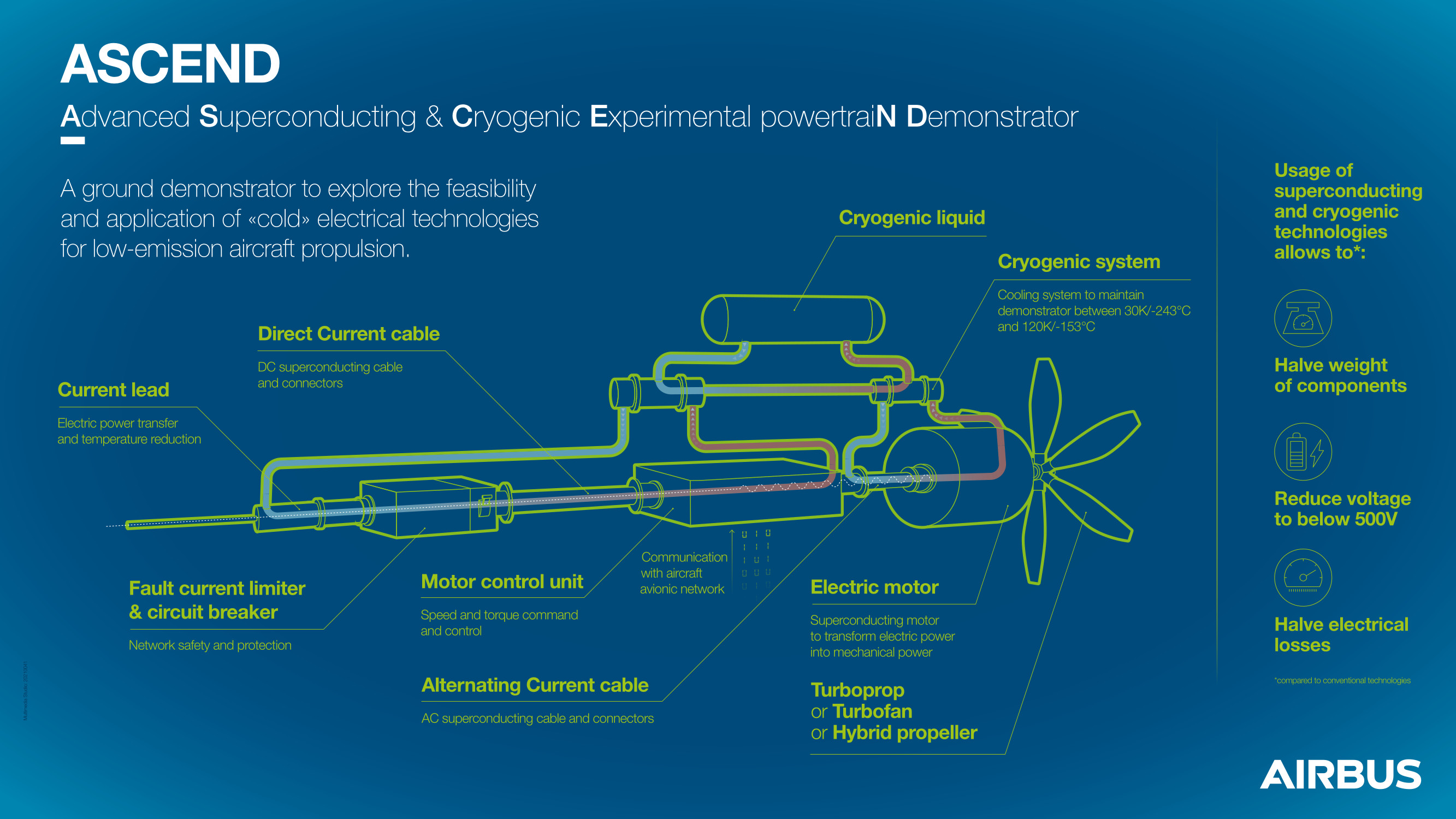


Airbus's ASCEND stands for Advanced "Superconducting and Cryogenic Experimental powertraiN Demonstrator" ! Well, the abbreviation is quite long but not longer than the aspirations of Airbus .
Today, Airbus UpNext came up with this innovative application effort, drawing inpirations from the “superconductivity” experiments of dutch Physicist Heike Kamerlingh Onnes.
ASCEND is a three-year demonstrator project of Airbus, aims to show that an electric- or hybrid-electric propulsion system complemented by cryogenic and superconducting technologies can be more than 2 to 3 times lighter than a conventional system—through a reduction in cable weight and a limit of 30kW/kg in power electronics—without compromising a 97% powertrain efficiency.
Basically , Airbus wants to reduce the weight of the propulsion system ( read as Power train ) of large commercial aircrafts like Airbus 320 , A330 & A350 etc. , if they have to fly with electric propulsion system ( read as Power train ), in the future.
Let's say, getting the equivalent of a 50,000lbs of thrust from an electrical power train is a dream, today’s electrical systems do not qualify the power requirements without adding further weight to the aircraft. In simple words, power-to-weight ratio does not agree to the development of such an aircraft.
So , what is there in this ASCEND project - the Promise ?
Airbus wants to test superconducting technologies alongside a cold source (likes of liquid hydrogen) to boost the performance of electric and hybrid-electric propulsion systems in future low-emission aircrafts.
What will be the architecture of the ASCEND demonstrator ?
ASCEND to start with a 500kW powertrain consisting of the following components:
What is the Plan ?
Along with weight optimization of the distribution system, another objective of ASCEND is to significantly increase the power density of the propulsion chain. This is a key consideration, as increasing the power of current electrical aircraft systems from a few hundred kW to the MW required for a fully electric aircraft is no easy feat.
Simply put, more power increases weight and installation complexity, and generates more heat. So Airbus wants to employ a cold source here to take control of the situation.
And a cold source at 20°K (-253.15°C), such as liquid hydrogen can be used to cool the electrical systems. The superconducting components can then work to significantly improve the power density of the electric-propulsion systems.
What do you think of this innovative idea of Airbus ? will it get any success in near future , let's say 50 years of time ?
Post you views in the comment section .
Picture Source : Airbus .
